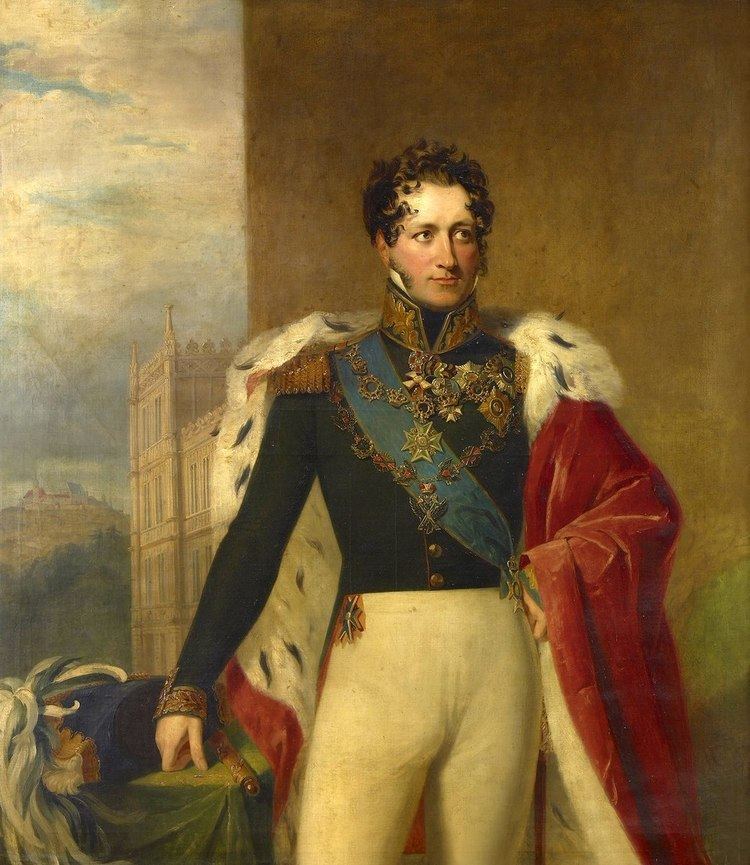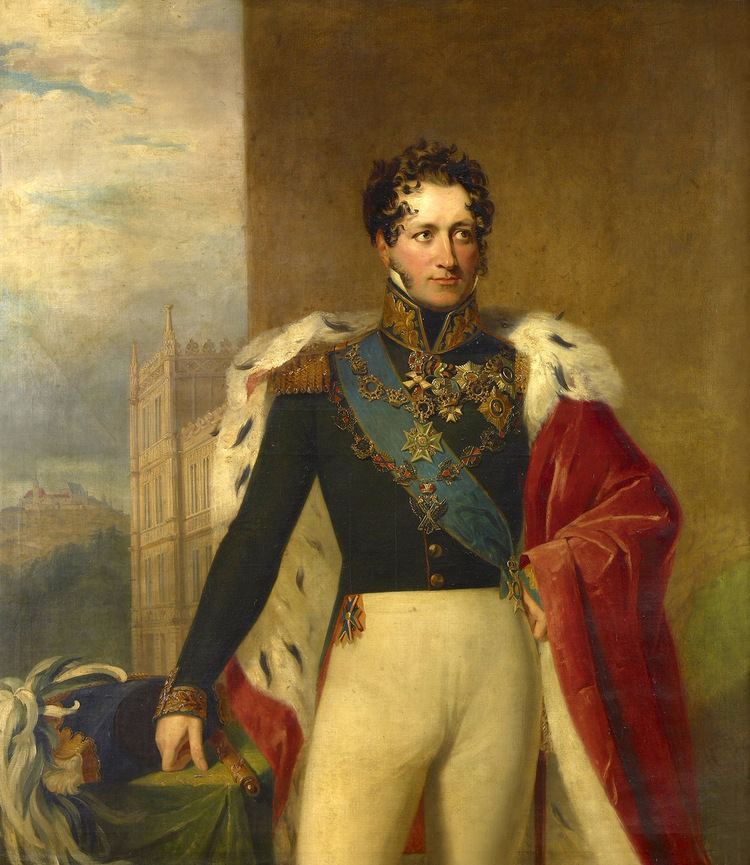Name Ernest Duke | ||
 | ||
Reign 9 December 1806 –12 November 1826 Reign 12 November 1826 –29 January 1844 Issue Ernest II, Duke of Saxe-Coburg and GothaAlbert, Prince Consort Died January 29, 1844, Gotha, Germany Children Albert, Prince Consort, Ernest II, Duke of Saxe-Coburg and Gotha Parents Countess Augusta Reuss of Ebersdorf, Francis, Duke of Saxe-Coburg-Saalfeld Spouse Duchess Marie of Wurttemberg (m. 1832–1844), Princess Louise of Saxe-Gotha-Altenburg (m. 1817–1831) Similar People Albert - Prince Consort, Princess Victoria of Saxe‑Coburg‑Saalfeld, Charles Edward - Duke of S, Alfred - Duke of Saxe‑Co, Countess Augusta Reuss of | ||
Ernest I (German: Ernst Anton Karl Ludwig Herzog; 2 January 1784 – 29 January 1844) was the last sovereign duke of Saxe-Coburg-Saalfeld (as Ernest III) and, from 1826, the first sovereign duke of Saxe-Coburg and Gotha (as Ernest I). He was the father of Albert, Prince Consort of Queen Victoria and is thus a patrilineal ancestor and great-great-great-grandfather of Queen Elizabeth II. Ernest fought against Napoleon Bonaparte and through construction projects and the establishment of a court theatre left a strong imprint on his residence town, Coburg.
Contents

Early life
Ernest was the eldest son of Francis, Duke of Saxe-Coburg-Saalfeld, and Countess Augusta of Reuss-Ebersdorf. His youngest brother, Leopold Georg Christian Frederick, was later elected the first King of the Belgians.
On 10 May 1803, aged 19, Ernest was proclaimed an adult because his father had become gravely ill, and he was required to take part in the government of the duchy. When his father died in 1806, he succeeded in the duchy of Saxe-Coburg-Saalfeld as "Ernest III". However, he could not immediately take over the formal government of his lands, because the duchy was occupied by Napoleonic troops and was under French administration. The following year, after the Peace of Tilsit (1807), the duchy of Saxe-Coburg-Saalfeld was reunited (having previously been dissolved) and restored to Ernest. This occurred through Russian pressure, since his sister Juliane was married to the brother of the Russian Tsar.
Marriages and children
In Gotha on 3 July 1817, Ernest married Princess Louise of Saxe-Gotha-Altenburg. They had two children:
- Ernest II Augustus Charles John Leopold Alexander Edward, Duke of Saxe-Coburg-Gotha
- Francis Augustus Charles Albert Emmanuel, better known as "Albert", the husband of Queen Victoria and Prince Consort of the United Kingdom.
The marriage was unhappy because husband and wife were alike promiscuous. As the biographer Lytton Strachey put it: "The ducal court was not noted for the strictness of its morals; the Duke was a man of gallantry, and the Duchess followed her husband's example. There were scandals: one of the Court Chamberlains, a charming and cultivated man of Jewish extraction, was talked of; at last there was a separation, followed by a divorce." Ernest and Louise were separated in 1824 and were officially divorced on 31 March 1826. As heirs to Coburg, the children remained with their father. Seven months after the divorce, in October 1826, Louise secretly married one of her lovers. She died in 1831.
In Coburg on 23 December 1832, Ernest married his niece Duchess Marie of Württemberg, the daughter of his sister Antoinette. They had no children. This marriage made Marie both Prince Albert's first cousin and his stepmother.
Ernest had three illegitimate children:
- Berta Ernestine von Schauenstein (b. 26 January 1817 – d. Coburg, 15 August 1896), born to Sophie Fermepin de Marteaux. She married her first cousin Eduard Edgar Schmidt-Löwe von Löwenfels, the illegitimate son of her father's sister, Juliane.
- Ernst Albert Bruno von Bruneck, born to Margaretha Braun. He died young in 1838.
- Robert Ferdinand von Bruneck, also born to Margaretha Braun. He was created Freiherr von Bruneck in 1856 and died the same year
Death and burial
Ernest died on 29 January 1844 and was initially buried in the Morizkirche but later reinterred in the newly built mausoleum on Friedhof am Glockenberg.
Estates
After 1813, Ernest was a Prussian general and participated in military actions against Napoleon. He fought in the battles of Lützen and Leipzig (1813) and drew in 1814 into the French fortress of Mainz. After the battle of Leipzig, he commanded the 5. Armeekorps.
After the defeat of Napoleon in the Battle of Waterloo, the Congress of Vienna on 9 June 1815 gave him an area of 450 square kilometres with 25,000 inhabitants around the town of St. Wendel. In 1816, this estate received the name of Principality of Lichtenberg. Ernest sold it to Prussia in 1834.
In 1825, Frederick IV, Duke of Saxe-Gotha-Altenburg, who was the uncle of Ernest's first wife Louise, died without an heir. This resulted in a rearrangement of the Ernestine duchies. It was only as a member of the Ernestine dynasty (and not as Louise's husband) that Ernest had a claim on the late duke's estates. However, he was at that time in the process of divorcing Louise, and the other branches used this as a leverage to drive a better bargain for themselves by insisting that he should not inherit Gotha. They reached a compromise on 12 November 1826: Ernest did receive Gotha, but had to cede Saalfeld to Saxe-Meiningen. He subsequently became "Ernest I, Duke of Saxe-Coburg and Gotha".
At Coburg, Ernest was responsible for various construction projects including the establishment of the Hoftheater in its new building. The Schlossplatz as it appears today is largely due to work under his rule.
